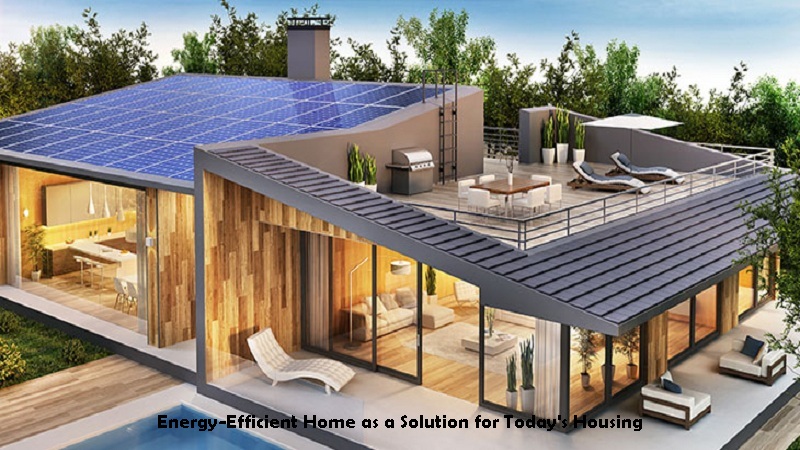Energy-efficient homes are becoming an increasingly popular housing concept in the modern era. The main focus of this concept is creating homes that are both energy-efficient and environmentally friendly. Through the selection of the right design, materials, and technology, homes are not only comfortable but also reduce their negative impact on the environment.

Energy-Efficient Homes and Their Key Principles
The main principle of an energy-efficient is efficient daily energy use. This can be achieved through natural lighting, cross-ventilation, and the use of energy-efficient household appliances. This allows for more controlled electricity needs without sacrificing comfort.
Furthermore, the application of insulating materials to walls and roofs helps maintain a stable room temperature. The house stays cool during the day and cools at night. This energy efficiency ultimately contributes to long-term operational cost reductions.
Supportive Architectural Design
Architectural design plays a significant role in supporting energy-efficient homes. Strategically positioned windows allow sunlight to enter the room without causing excessive heat. Similarly, the use of low-emissivity glass reflects heat while still allowing light to enter.
The use of green roofs, solar panels, and vertical gardens is also becoming increasingly popular. These elements not only enhance the aesthetics of a home but also serve as alternative energy sources and absorb excess heat.
Technology: Smart System
Technological advancements have strengthened these concepts. Installing smart systems in homes, such as automatic lighting, motion sensors, and smart thermostats, helps manage energy usage efficiently.
Electronic devices labeled energy-efficient are now more readily available on the market. Washing machines, refrigerators, and air conditioners with inverter technology can significantly reduce electricity consumption.
Economic and Environmental Benefits
Adopting the energy-efficient home concept not only offers financial benefits but also has a positive impact on the environment. Monthly electricity bills can be significantly reduced due to more controlled energy consumption.
From an environmental perspective, the use of renewable energy sources such as solar panels can reduce dependence on fossil fuels. The greenhouse effect can also be reduced, thus contributing to the sustainability of the global ecosystem.
Solar Panels vs Energy-Efficient Appliances
Solar panels and energy-efficient appliances are both essential elements of an energy-efficient home. But they have different focuses. Solar panels generate renewable energy independently, reducing dependence on conventional electricity. The initial investment is quite large, but the long-term impact is significant. Meanwhile, energy-efficient appliances such as inverter air conditioners, high-efficiency refrigerators, or LED lighting offer immediate savings on daily electricity consumption at a more affordable price. The combination of the two creates a more efficient and environmentally friendly home.
Based on originenergy‘s Instagram video, when trying to implement an energy-efficient, I realized how beneficial these simple steps were. For example, when cooking with a more efficient appliance than an oven, food cooks faster and electricity bills feel lighter. Initially, I just wanted to try a small trick, but the impact is real: the kitchen becomes more practical, time is saved, and the house feels smarter in its energy use. There is a sense of satisfaction when you realize that these simple daily habits are not only financially beneficial but also make a real contribution to preserving the environment.
An energy-efficient home is a modern housing solution that combines comfort, cost savings, and environmental sustainability. Through appropriate architectural design, the use of modern technology, and the application of energy efficiency principles, a home can become a more environmentally friendly and economical place to live in the long term. /tari



